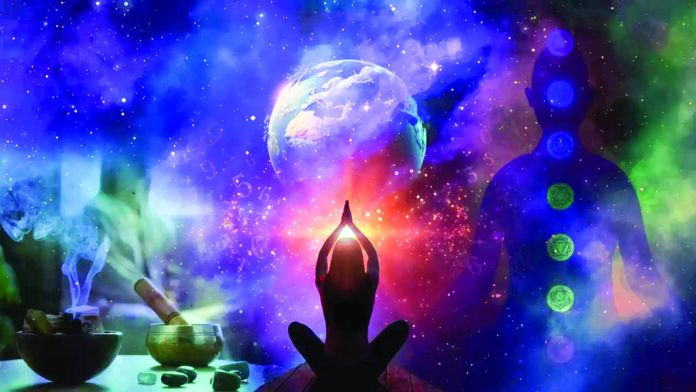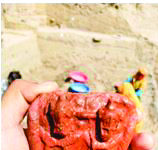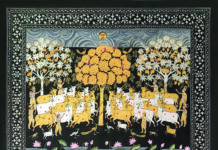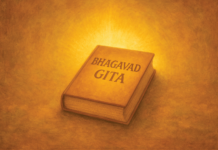UNESCO adds India’s sacred manuscripts to Memory of the World, preserving cultural heritage for humanity.
“Whenever dharma declines and adharma rises, I incarnate.” — Bhagavad Gita
These ringing words—spoken by Krisna to a despairing Arjuna on the eve of battle—have consoled saints, stirred revolutionaries and intrigued philosophers from Thoreau to Tillich. In April they acquired fresh resonance when the manuscript traditions that carry them, along with Bharata’s Natyasastra, were inscribed on UNESCO’s Memory of the World Register. They join three Indian entries listed in 2024—the lavishly illustrated Ramacaritamanasa, a fifteenth century Pañcatantra and the aesthetics treatise Sahrdayaloka Locana—forming a quintet of classical works recognised in rapid succession. Why does that matter, and for whom?
UNESCO launched the Memory of the World Programme in 1992 to guard against collective amnesia—fires, floods and the slow attrition of neglect that have already cost humanity Alexandria’s papyri and Nalanda’s libraries. Every two years its International Register elevates a handful of documents to “world significance,” but listing is no trophy hunt; custodians must commit to preservation, digitisation and public access. India now has thirteen inscriptions, yet the latest cluster is distinctive: it braids scriptural ethics, narrative imagination and performing arts science under one conservation mandate.
Ramacaritamanasa retells the Ramayana in Awadhi verse, infusing North India’s devotional fabric with Tulasidas’s egalitarian bhakti. The Pañcatantra diffused statecraft fables from Baghdad to Barcelona, shaping global moral pedagogy. Sahrdayaloka Locana systematised rasa theory, revealing why stories move us at all. Add the Bhagavad Gita’s dialectic of duty and the Natyasastra’s two millennia old blueprint of dramaturgy, and a panoramic idea emerges: societies rehearse virtue in the laboratory of narrative and performance. Registering the five together foregrounds that entwined legacy.
The benefits are concrete. First, rescued originals: palm leaf, birch bark and early rag paper folios crumble at a careless touch; MoW status unlocks expertise in humidity control, fungal mitigation and spectral imaging, urgent as monsoons flood archives from Uttarakhand to Kerala. Second, democratic access: UNESCO insists on openness, so a student in São Paulo will soon consult high resolution folios once locked in a Mathura monastery, dissolving academic visa hierarchies. Third, global validation: the Gita’s counsel to act without craving reward speaks to burnout economies; the Natyasastra’s maxim “bahu jana sukhaya—for the happiness of many” animates everything from Japanese Noh theatre to Stanislavski’s method. Fourth, interdisciplinary R&D: chemists reverse engineer ancient inks; computer scientists train AI to collate variant verses; VR artists rebuild Bharata’s stage machinery. Heritage becomes laboratory, not mausoleum. Fifth, cultural diplomacy: by foregrounding philosophies that privilege dialogue over dogma, India projects a civilisational brand of pluralism at a time when cultural walls are rising worldwide.
Behind the scenes, the Indira Gandhi National Centre for the Arts assembled meticulous dossiers—provenance trees, risk audits, conservation roadmaps—under its Kalanidhi Division. Designated nodal agency in 2014, IGNCA resembles the stagehand in classical Sanskrit drama: invisible yet indispensable. Its scholars often step in when private holders lack resources, showing how curatorial toil can move global needles without megaphone diplomacy.
To grasp these manuscripts’ trans epochal pull, trace the arc of quotations they seeded. “Truth alone triumphs; not falsehood” from the MundakaUpanisad girded India’s constitutional motto. “Yatodh-armahtatojayah—where there is righteousness, victory follows” crowns the Supreme Court’s emblem. “Perform thy duty but do not concern thyself with the fruit” inspired Gandhi’s Salt March and led physicist Robert Oppenheimer to memorise Sanskrit. Shakespeare’s “All the world’s a stage” arrived four centuries after Bharata framed theatre as a mirror to cosmic play. The Pañcatantra’s maxim “Friendship with the wicked ends in ruin” survives in Aesop’s frog and scorpion and in Pixar tales of loyalty. These resonances show how Indic texts acted as civilisational WLAN long before Ethernet: ideas leapt borders through Persian court translations, Jesuit presses, Bengal Renaissance lithographs, and now, cloud servers.
Archival voids distort the stories nations tell about themselves. The sacking of Baghdad in 1258 erased centuries of Arabic science; Europe’s ignorance of Timbuktu’s libraries fed racist historiography. Climate change now writes a similar obituary in slow motion. Himalayan glaciers melt above monasteries housing early Gita commentaries; coastal repositories in Kerala battle salinity. UNESCO listings trigger preparedness audits and seed funding that a lone temple trust—or monk—could never muster. Memory, then, is infrastructure. As the Rig Veda cautioned three millennia before GDP, “What good are riches to a man whose memory is not rich?” Development without archival stewardship courts cultural bankruptcy.
India should seize the momentum. A national MoW register could surface state level gems before they vanish and channel CSR funds into digitisation. Embedding heritage across higher education would let engineering labs model palm leaf biomaterials while business schools parse Pañcatantra negotiation tactics. Preventive conservation budgets cost less than post flood rescues. Micro granting village priests to scan manuscripts without surrendering ownership could ease mistrust of “Delhi collectors.” And born digital heritage—podcasts, VR story worlds, genomic datasets—must be archived now, or tomorrow’s Alexandrias will burn in the cloud.
The beauty of UNESCO ceremonies lies in adjacency: Jamaican reggae master tapes beside Swedish Astrid Lindgren drafts, Iceland’s medieval Grágás code beside Burmese chronicles. The Register mocks civilisational rankings by shelving them side by side, inviting each generation to browse and remix. In that planetary library India’s new entries speak in two tongues. The Gita whispers that the fiercest wars are fought within conscience. The Natyasastra sings that humans sculpt emotion into gesture, turning existence into play. Ramacaritamanasa preaches compassion, Pañcatantra warns through wit, Sahrdayaloka Locana decodes why art moves us at all. Together they argue that memory is not what we hoard but what we enact—daily, creatively, responsibly.
With UNESCO’s imprimatur the manuscripts have crossed a threshold from vulnerable artefact to safeguarded commons. The onus now shifts to scholars who must produce critical bilingual editions, to artists who must reinterpret without embalming, to citizens who must defend libraries as fiercely as borders. Should we falter the silence that follows will indict us more harshly than any invading army. For civilisation, as the Atharva Veda hinted long ago, “is the river of remembered words; when the words dry, the river dies.” Let us keep the river flowing.
(Writer is a Member of International Advisory Committee, UNESCO MoW Programme and Dean Admin IGNCA)








